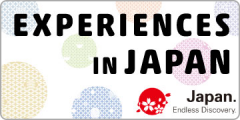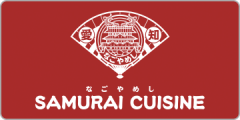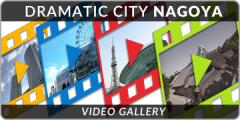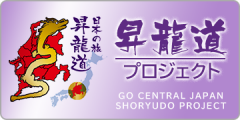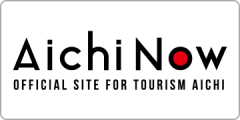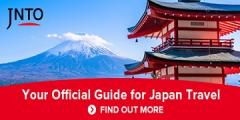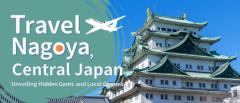- Home
- Sightseeing Spots
Sightseeing Spots
61 - 80 / 148 RESULTS
-
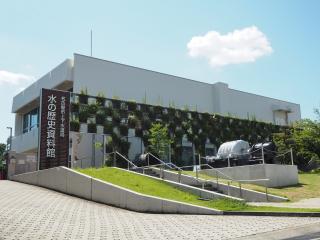
Eastern Area
Water History Museum
The Water History Museum is a place where you can easily learn about the history, role, and disaster prevention aspects of Nagoya's water supply and sewerage projects. It was established to commemorate the 100th anniversary of Nagoya City's water supply and sewerage business. The museum houses over 800 exhibits, showcasing historical materials and items related to Nagoya's water supply and sewerage projects. The friendly museum staff offer guided tours and organize seasonal events for visitors to enjoy. By visiting the museum, you can gain a clear understanding of the development and significance of Nagoya's water infrastructure and its essential role in disaster preparedness. If you're interested in learning about the history of Nagoya's water supply and sewerage, as well as its contribution to disaster prevention, the Water History Museum is the perfect place to explore. See More
The Water History Museum is a place where you can easily learn about the history, role, and disaster prevention aspects of Nagoya…See More
-
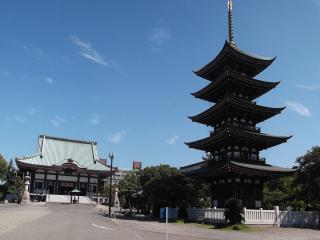
Eastern Area
Nittaiji (Kakuozan)
Nittaiji Temple was established in 1904 to enshrine Buddha's ashes and glit bronze received from the king of Thailand in 1900. This is the only non-sectarian Buddhist temple that every sect of Buddhism manages in order. In the temple site, there are a Gandhara style tower, a Hoanto, where the skeletal remains are maintained, a garden called Hassoen, and a tea ceremony room, Soketsuan. The five-story pagoda was built in April 1997. A street fair is held on the 21st day of the month. See More
Nittaiji Temple was established in 1904 to enshrine Buddha's ashes and glit bronze received from the king of Thailand in 1900. Th…See More
-
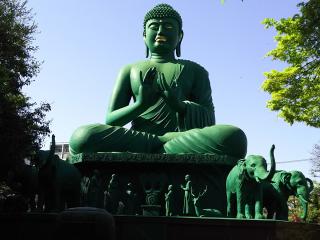
Eastern Area
Toganji
It is a temple of Soto sect of Buddhism. Oda Nobuyuki, the 3rd son of Oda Nobuhide (the father of the famous warlord, Oda Nobunaga) established this temple to pray for the repose of his father's soul. In its site, gorinto (a gravestone composed of five pieces piled one upon another) is built. Today, Toganji is widely known as the temple of Benzaiten (a Goddess of eloquence, music and art) and show-business personalities visit and pray for a better performance. This temple possesses several temple treasures in the motif of men and women united in conjugal acts including the so-called Sleeping Benzaiten. A 10-meter high statue, the Great Buddha of Nagoya, was erected in 1987. See More
It is a temple of Soto sect of Buddhism. Oda Nobuyuki, the 3rd son of Oda Nobuhide (the father of the famous warlord, Oda Nobunag…See More
-
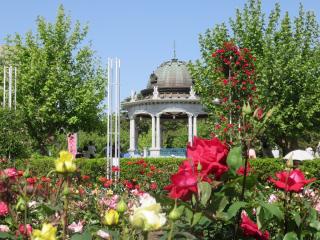
Eastern Area
Tsuruma Park
The first Nagoya City municipal park, opened in 1909. Tsuruma Park has a Western-style garden with flower beds and a rose garden spread around a fountain on the west side, and a Japanese-style garden with two ponds—Kochogaike Pond and Shobuike Pond—on the east side. The Japanese-style garden has 750 cherry trees, and starting with the cherry blossoms in April, people gather for flower festivals of all kinds—azaleas, roses, irises, and more—following one after another. The park is also home to Okaya Nagoya Hall, a library, and a playground. Come and experience the relaxing aura of this park beloved by all of Nagoya's citizens. See More
The first Nagoya City municipal park, opened in 1909. Tsuruma Park has a Western-style garden with flower beds and a rose garden …See More
-
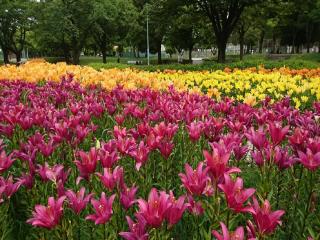
Eastern Area
Chikusa Park
A lush green place to relax and refresh, known as a famous place for lilies Located within a quiet residential area that suddenly opens up into a verdant space, Chikusa Park is also famous for being one of the best places for lilies in Nagoya. Committed to creating a barrier-free place that everybody can use easily, the park is equipped with paths through the park that wheelchairs or strollers can use and multipurpose toilets. See More
A lush green place to relax and refresh, known as a famous place for lilies Located within a quiet residential area that sudde…See More
-
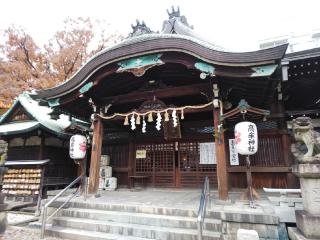
Eastern Area
Takamu Shrine
The pure spring water that springs forth within the precincts of Takamu Shrine is known as "Koi no Mizu" or "Love Water." It's said that drinking this water can bring about romantic relationships or even longevity. The purity of this water is guaranteed. This water maintains a consistent temperature throughout the year and is now one of the few remaining wells within the city. Takamu Shrine, the place of origin for the name "Furui no Sato" (Ancient Well Village), is an ancient shrine mentioned in the Engishiki (927 AD, mid-Heian period) and is classified as a Shikinaisha (Shinto shrine listed in historical records). The shrine enshrines the Deity of Bonds and Hachiman-sama. See More
The pure spring water that springs forth within the precincts of Takamu Shrine is known as "Koi no Mizu" or "Love Water." It's sa…See More
-
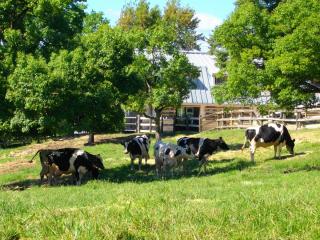
Eastern Area
Nagoya City Agricultural Center Dela Farm
The center was established on April 1, 1965 to promote the development of agriculture in Nagoya as urban agriculture. Today, it is opened to the public as a place for relaxation with a lot of green and water. It is also used as an agriculture park to promote agricultural education and to experience agriculture. Fresh milk and ice cream are available at the milk factory. See More
The center was established on April 1, 1965 to promote the development of agriculture in Nagoya as urban agriculture. Today, it i…See More
-
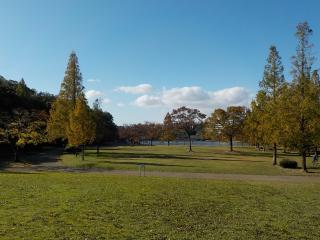
Eastern Area
Peace Park
Park located in Chikusa Ward (partly Meito Ward) in the eastern hilly region of Nagoya. It was developed through a large scale urban reorganization project after World War II, and many of Nagoya's cemeteries were relocated within Peace Park. "Heiwa-do" (Hall of Peace) completed in 1964 is a memorial facility commemorating the relocation of war-damaged cemeteries as part of post-war reconstruction efforts. In addition to being known as a prominent cherry blossom viewing spot with the "Sakura no En" (Cherry Blossom Garden), the park features the spacious "Metasequoia Hiroba" (Metasequoia Plaza), the well-designed "Kurashi no Mori" (Forest of Living) area incorporating existing woodlands and a walking trail, creating a serene space where citizens can relax and enjoy nature. See More
Park located in Chikusa Ward (partly Meito Ward) in the eastern hilly region of Nagoya. It was developed through a large scale ur…See More
-
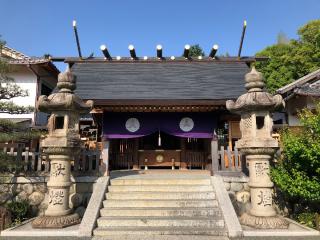
Eastern Area
Shiogama Shrine
Divine spirit was received from Shiogama Shrine in Miyagi Prefecture and enshrined. The enshrined deity is Shiozuchi Oji no Kami (Salt Soil Old Man Deity), who is believed to govern the tides and sea routes. Given that childbirth is related to the ebb and flow of tides, the deity is deeply revered as a guardian of safe childbirth. It's also said to be a guiding deity who imparted knowledge of salt-making techniques, and is highly venerated as a guardian of the safe growth of children and protection from pests. See More
Divine spirit was received from Shiogama Shrine in Miyagi Prefecture and enshrined. The enshrined deity is Shiozuchi Oji no Kami …See More
-
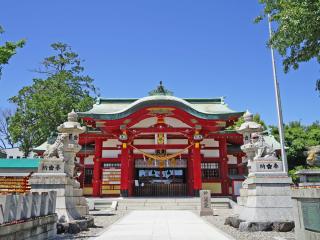
Eastern Area
Ueno Tenmangu Shrine
This is a shrine dedicated to Sugawara no Michizane, known as the God of learning. It is said to have been founded by Abe no Seimei during the Heian period. We offer various prayers and doll dedications without the need for reservations, so please feel free to visit. See More
This is a shrine dedicated to Sugawara no Michizane, known as the God of learning. It is said to have been founded by Abe no Seim…See More
-
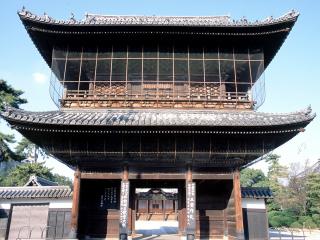
Eastern Area
Kenchuji Temple
Kenchuji is a temple belonging to the Jodoshu sect of Buddism and was established by the 2nd lord of Owari-han, Tokugawa Mitsutomo, in 1651 to pray for the soul of his late father, Yoshinao. Since its establishment, this temple has been the family temple of the Owari Tokugawa Family. There is a Gongen style mausoleum which is registered as prefectural cultural property at the back of the main building and ancestral memorial tablets of successive lords are enshrined in it. The temple's gate which was built in 1652 is the tower gate of sangen-ikko style (a 3x2-bay gate). See More
Kenchuji is a temple belonging to the Jodoshu sect of Buddism and was established by the 2nd lord of Owari-han, Tokugawa Mitsutom…See More
-
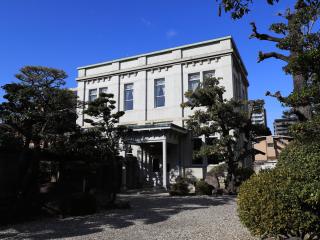
Eastern Area
Former Residence of Sasuke Toyoda
Sasuke Toyoda was a business man and also the younger brother of Sakichi Toyoda, master of invention. At that time, the residence of Risaburo Toyoda was also located here. Although the gate and fence of Risaburo's place remain, only Sakichi's house exists to this day. On the 1st floor, you can see lights in the shape of lotus buds and air vents with the word "Toyota" designed into the motif of a crane. See More
Sasuke Toyoda was a business man and also the younger brother of Sakichi Toyoda, master of invention. At that time, the residence…See More
-

Eastern Area
Catholic Chikaramachi Church
The church was established in 1888 by the French Catholic missionary Fr. Augustin Tulpin and Japanese doctor Shusai Inoue, thus making it the oldest church in Aichi. See More
The church was established in 1888 by the French Catholic missionary Fr. Augustin Tulpin and Japanese doctor Shusai Inoue, thus m…See More
-
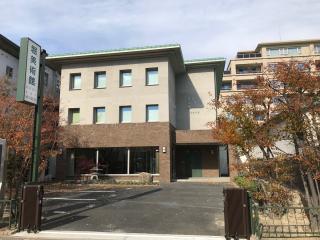
Eastern Area
Bunkanomichi Hori Museum
The Horikawa Museum is an art museum that opened in June of the 18th year of the Heisei era (2006) to showcase the collection of Makoto Hori, the founder of the Daito Tech Group. The museum mainly exhibits works by artists from the "Era of Passionate Art," who studied in Paris during the early Showa period and made efforts to create a Japanese-style Western painting. The museum displays masterpieces by representative artists of modern Japanese painting who were active in the Showa era, as well as contemporary art pieces. See More
The Horikawa Museum is an art museum that opened in June of the 18th year of the Heisei era (2006) to showcase the collection of …See More
-
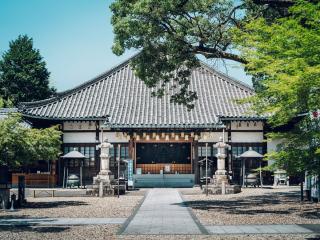
Eastern Area
Yagotosan Koshoji Temple
The impressive presence of the historic Owari Koya Yagotosan Koshoji Temple is a Shingon Sect temple in Nagoya City. It was built in 1688 by Buddhist priest Tenzui Ensho, who received Kukai's five-pronged vajra. It became known as a place of worship for the Owari Tokugawa family after the second lord of the clan, Tokugawa Mitsutomo, began devoting himself to the priest's teachings. Also called Owari Koya, it became a place of learning and training, as well as an object of worship for many people. See More
The impressive presence of the historic Owari Koya Yagotosan Koshoji Temple is a Shingon Sect temple in Nagoya City. It was bu…See More
-
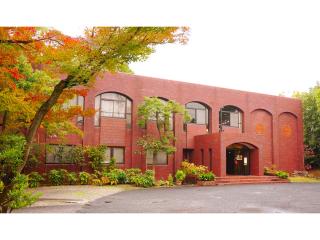
Eastern Area
Showa Museum of Art (Goto Hoon Association Public Interest Incorporated Foundation)
A quiet tea ceremony implement museum with a lush, green garden Showa Museum of Art opened in 1978 as a private-collection museum. This natural-forest garden in a peaceful neighborhood in the east of Nagoya is home to the sukiya-style Nanzanjuso (an Aichi Prefecture designated cultural property), a former samurai villa that was relocated there in 1935. The tea ceremony room within is called Nejikago no Seki, and is opened up for guided visits about 10 times a year (reservations required). See More
A quiet tea ceremony implement museum with a lush, green garden Showa Museum of Art opened in 1978 as a private-collection m…See More
-
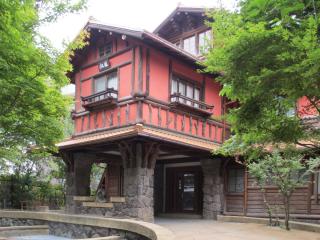
Eastern Area
Yokiso
A villa of history and culture Yokiso is a villa constructed from the Taisho to the Showa Era on the hilly land of Kakuozan by the 15th-generation Ito Jirozaemon, the a founder of Matsuzakaya Department Store. This is a representative suburban villa in Nagoya. 1) The north garden has many highlights around a pond. No reservation necessary. 2) A tour to the buildings and the south garden is conducted by a guide. Prior application required. See More
A villa of history and culture Yokiso is a villa constructed from the Taisho to the Showa Era on the hilly land of Kakuozan by…See More
-

Eastern Area
Kuwayama Art Museum (Kuwayama Seizan Association Public Interest Incorporated Foundation)
Kuwayama Art Museum was opened in 1981 with the donation of the first curator Seiichi Kuwayama's lifelong collection of artworks and craft pieces. The collection is based around contemporary Japanese paintings and tea ceremony implements from the Kamakura period to the modern day, so the exhibition is changed three times a year, focusing on Japanese paintings in the spring and tea ceremony implements in the fall. The small tea room called Seizan in the garden, the Borokaku hall on the second floor of the main building, the table tea ceremony room on the second floor of the annex building, and the multipurpose hall on the first floor of the annex building are all available for use by the public. See More
Kuwayama Art Museum was opened in 1981 with the donation of the first curator Seiichi Kuwayama's lifelong collection of artworks …See More
-
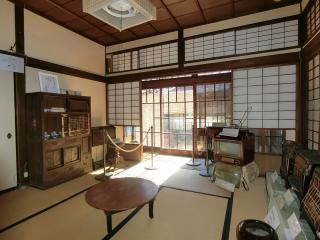
Eastern Area
Former Residence of Tetsujiro Haruta
Tetsujiro Haruta, a successful ceramics merchant and founder of Taiyo Shoko Co., Ltd., is said to have asked architect Goichi Takeda to build this house. The Haruta residence consists of a Western-style building with a Japanese-style building behind it, and from 1947 to 1951, it was requisitioned by the U.S. 5th Air Force as a headquarters. The first floor of the Western-style building is currently being used as a French fusion restaurant. Tours of the buildings are conducted by request. For inquiries, please contact the Former Residence of Sasuke Toyoda, the east neighbor of the residence. (* Tours of the restaurant are not available) See More
Tetsujiro Haruta, a successful ceramics merchant and founder of Taiyo Shoko Co., Ltd., is said to have asked architect Goichi Tak…See More
-
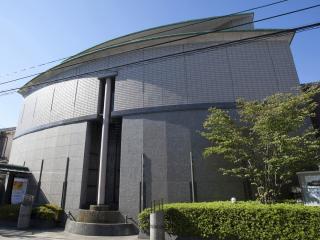
Eastern Area
Furukawa Art Museum and Tamezaburo Memorial Hall
Sukiya-style architecture and art Furukawa Art Museum was opened in November 1991 to display art collected over many years by the first curator, Tamezaburo Furukawa (1890-1993). The art was donated with the wish that it would be enjoyed by many people, not just shut away in a private collection. The collection totals about 2,800 items, with a focus on contemporary Japanese painting. It also includes oil paintings, ceramics, crafts, a 15th century illustrated manuscript, and more. Currently, various educational activities, such as art lectures and workshops, are also available in addition to the exhibition of the collection. In November 1995, Tamezaburo's private residence was opened up to the public as the Tamezaburo Memorial Hall, in accordance with his wish for it to be a place of relaxation for everyone. Six buildings from the Tamezaburo Memorial Hall built in 1934, including … See More
Sukiya-style architecture and art Furukawa Art Museum was opened in November 1991 to display art collected over many years by …See More






